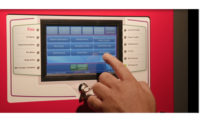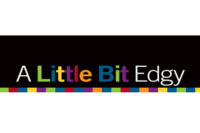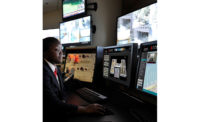
Compared with their security counterparts, the fire alarm market often seems slower to change – the industry is understandably extra cautious about its life safety responsibilities. But change is inevitable. In the fire alarm world, that means good news for the installing dealer and end user alike.
In the realm of fire alarm panels, technologies are moving forward, and in the process they are changing the way dealers will sell and install those products in the future.
Intelligence Affordable for Smaller Sites
For example, analog addressable technology is becoming even more intelligent, and it is being used in smaller applications than in the past.“Fire is being driven by electronics technology today,†says Rick Falbo, national sales manager, Summit Systems Technologies, Vaughan, Ontario. “As things like integrated circuits become smaller, faster and more powerful, it is reducing costs for fire products in general, allowing existing and newer panels to do more than they were previously able to do.â€
Tim Frankenberg, fire and security product manager, Potter Electric Signal Co., St Louis, Mo., agrees.
“There is a big push to go to intelligent systems, analog,†he says. “Before, you were given a point and told that it was in the hallway. Now it’s ‘address #1’ and also it’s ‘clean’ or ‘dirty’ or ‘out of calibration.’ The devices and panel are talking to each other.â€
This is an advantage to installing dealers, and here’s why.
“They are going to get more value for their purchasing dollar,†Falbo says. “The same dollar spent allows them to purchase a more sophisticated system. It also represents a much more reliable installation down the road. They won’t have to continuously respond to false alarms and tie up manpower that way. It will free them up to pursue more jobs, more installations and improve their overall reputation in the marketplace with a more reliable product.â€
Robert P. Williams definitely understands the benefits of intelligent panels. “It allows us to be able – from one central area – to get a history of alarm activity at the location, or to adjust any of the detectors for environmental sensitivity,†says Williams, president of Briscoe Protective Systems Inc., Smithtown, N.Y.
“With smart detectors you get advance warning,†adds John Nixon, president, Protective Systems Inc., Algonquin, Ill. “We also experience a reduced time of installation. Smart technology reduces service call time. Similarly, when you have a device that might be malfunctioning, addressables reduce time for us in pinpointing the problem.â€
Large facilities have benefited from this technology for some time.
“We used to think of this only for larger locations,†Nixon says. “Now we are doing two- to three-story office buildings using complete addressable technology and integrating it with building systems and doing it affordably for the building owner.â€
Falbo adds, “Quite a few smaller installations in the past were done using conventional hardwired panels and devices. Today, more and more applications are going the addressable route.â€
Integration Make It an Environmental Panel
Across nearly all industries, the trend in system design is integration. That is happening in the fire detection market, too.“As far as the bigger picture goes, one trend is tying fire alarm systems into building controls, networking things together,†Frankenberg says.
Roy Cats, president and owner of Fire Protection Inc., Everett, Wash., has witnessed the same trend.
“A lot of panels are integrating access, CCTV, etc.,†Cats says. “I think we will see them increasingly incorporate into fully integrated systems where they run everything – access, HVAC, you name it.â€
Williams believes it may go even a step further. “I see them encompassing environmental sensors, as well,†he predicts. “Control panels will operate as mini building-management systems. Sensors will determine heat or coolness of particular areas. Some environmental detectors, such as certain kinds of radon detectors and different environmental nuisances, would also sound an alarm at the control panel. In addition to fire alarm, it would also be an environmental control panel.â€
For dealers, this can only mean business. “It would expand our opportunities,†Williams adds. “We would be able to sell additional types of detection to customers.â€
Integration with access control and building control systems is already becoming common practice in low- to high-rise buildings, Nixon says. “I predict somewhere in the next five to 10 years they will fully integrate video, as well,†he adds. “The technology is there for agencies to see the area that may be generating the alarm before they actually travel up to it.â€
AHJs More Accepting of Wireless
One technology that is starting to gain more acceptance from authorities having jurisdiction (AHJs), dealers and end users is wireless.“Wireless technology has been around for a while, but the technology is at a point now where it is more reliable, and a lot of times it is more efficient for the installer to install both wired and wireless in a fire installation,†says Paul Martin, director of marketing, commercial products, Honeywell Security and Custom Electronics Division, Syosset, N.Y.
“Hybrid panels now can accommodate both hardwired and wireless technology,†he adds. “The benefit to the installer is he can wire fire sensors where needed, but if there is a point of protection that is difficult to reach or cost-prohibitive, he can install wireless on the same system.â€
Wireless technology now is to the point that fire marshals and AHJs have slowly been accepting it as a viable alternative to wired, Martin adds.
For the dealer and installer, wireless offers several benefits.
“It will save them a lot of time and labor when installing a device,†Martin notes. “From the end user point of view, it’s going to have the install done quicker.â€
An overall trend Martin points to is that the increased awareness of fire safety has caused many states to require smaller and smaller businesses to have fire systems. “One of the reasons wireless is so popular is that someone can go into a job that now requires that, and put it in fairly quickly without compromising business or structure.â€
Nixon says his company is using wireless extensively in their installations.
“We try to stay on the reliable edge of technology so we can offer our customers a little more reliability,†Nixon says. “Service calls go down because we don’t have to deal with phone line problems.
“It also increases our RMR. We have constant supervision of the signaling aspect of it. We feel better about giving our customers the 24/7 coverage they deserve without having to rely on a telephone vendor.â€
Side Bar: The Impact of UL Revision 9
A factor that will affect fire alarm panels in the coming year is Underwriters Laboratories’ (UL) revision 9, a change that will more closely mirror NFPA 72.“The biggest thing coming up industrywide is UL’s 9th edition revision,†says Rick Falbo, national sales manager, Summit Systems Technologies, Vaughan, Ontario. “Quite a few existing panels on the market had to be updated and revamped in order to comply. Across-the-board manufacturers are scrambling to meet this new requirement. Quite a few are discontinuing some of their older technology as opposed to making it comply. They are introducing newer models to replace those.â€
What does this mean for dealers?
Tim Frankenberg, fire and security product manager, Potter Electric Signal Co., St Louis, says a lot of the changes will be transparent. “There may be a few display changes, but the biggest thing is some models will be gone.
“Some of the models [dealers] were used to seeing before may not be there now.â€
Side Bar: Most Desired Technology
What technologies would dealers most like to see incorporated in fire alarm panels? SDM polled several readers to find out.“We do several-story locations. It would be nice if you could incorporate a mini-camera on the same cable, so that when that detector went off, the camera would come on to let you know if there was actually a fire.†– Roy Cats, president and owner, Fire Protection Inc., Everett, Wash.
“The ability to track down and isolate ground faults in exact locations rather than just an area.†– Alan Dyson, owner, Dyson Alarm Tech Systems, Lindsey, Ontario.
“Some sort of readout to put on the screen about ground faults. Most of the panels, if you have 30 different connections on a panel, you have to take off wires one at a time. If there was a ground fault readout, you could pinpoint right where to go.†– James Webster, owner, Federal Alarm, Trenton, N.J.
“I would like to be able to put in a feature where, in case of an alarm, it would work with a CCTV camera so you would be able to see the area to detect if smoke is happening.†– Robert P. Williams, president, Briscoe Protective Systems Inc., Smithtown, N.Y.
Side Bar: Installers Note Most Beneficial Technology
What recent technology advancement in fire panels do dealers find the most useful? SDM polled a handful of readers to find out.“Addressable detectors are the most useful. Service calls are reduced from one hour trying to find a bad detector to one minute. We know the problem before we arrive at the scene. We save a ton of money in the service end and retain customers because we have no problems and keep their prices downâ€. – Roy Cats, president and owner, Fire Protection Inc., Everett, Wash.
“The affordability of the addressable fire alarm for small office complexes. In the past, it was only in larger warehouse facilities because of the cost. More market exposure brought the price down so now it is being used in smaller installations.†– Alan Dyson, owner, Dyson Alarm Tech Systems, Lindsey, Ontario.
“I feel the most useful is the maintenance alert feature. Every false alarm elicits a fire department response. The maintenance alert keeps the ‘crying wolf’ syndrome down. It’s a proactive way of cutting down false alarms.†– Robert P. Williams, president, Briscoe Protective Systems Inc., Smithtown, N.Y.
“We have found that the most useful and beneficial technology has been wireless network for signaling. We’ve begun to move away from physical wire connection into wireless. We can present our customers with cost reduction by cutting the cord, so to speak.†– John Nixon, president, Protective Systems Inc., Algonquin, Ill.






